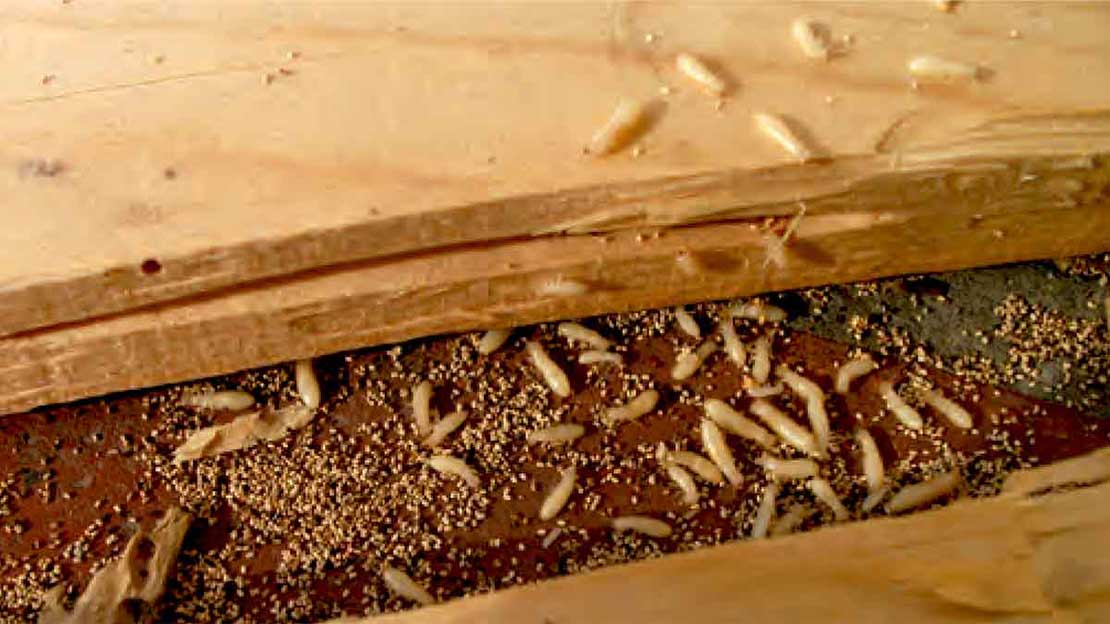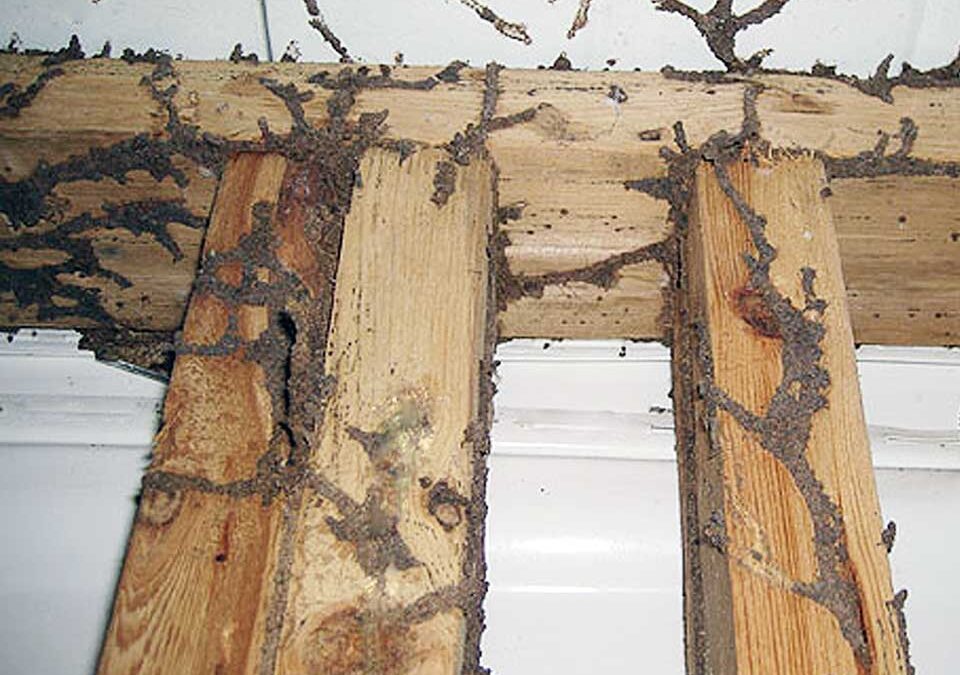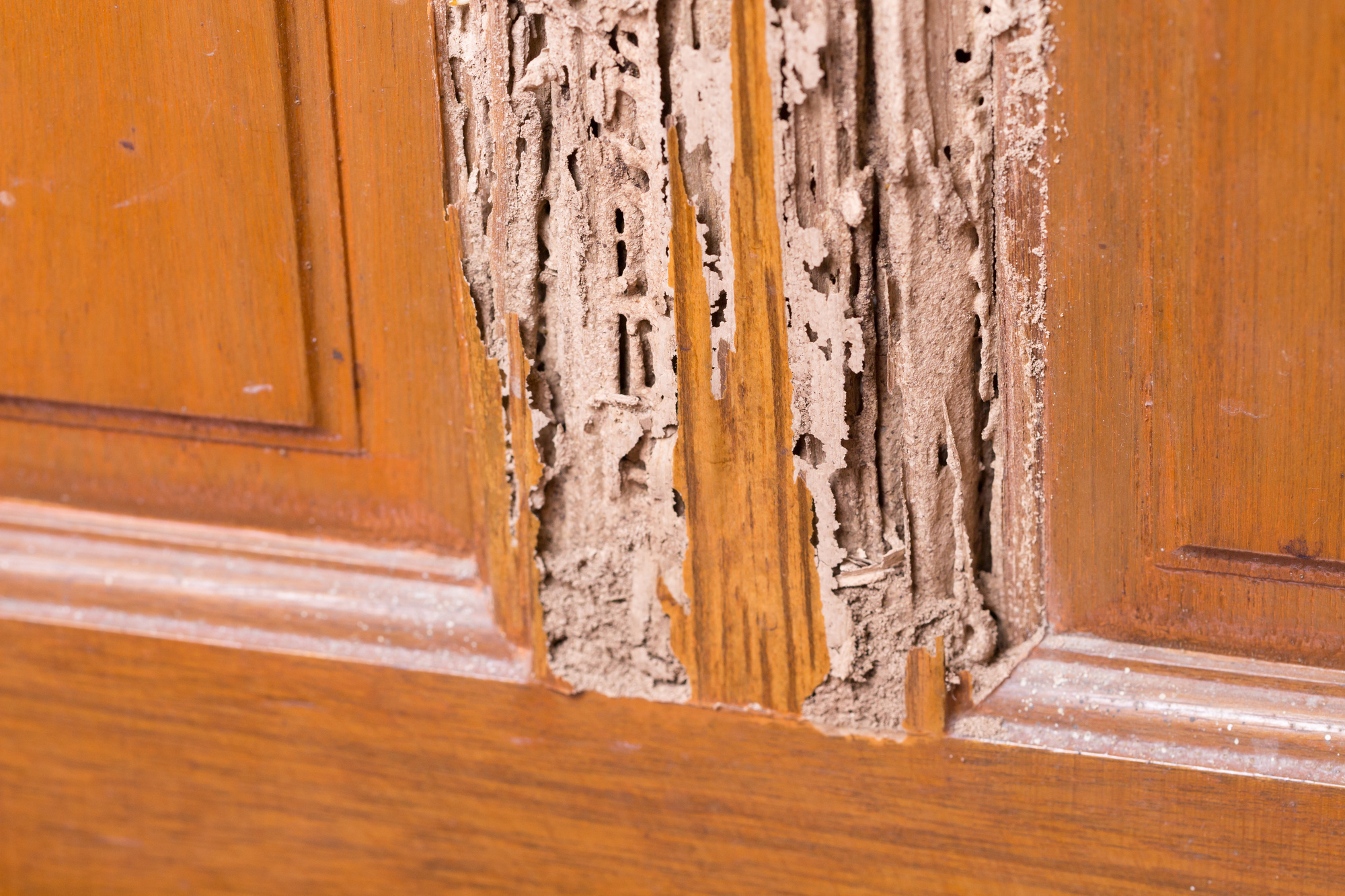Florida’s subtropical climate—featuring high humidity, mild winters, and abundant rainfall—offers a year-round haven for numerous pests, including some of the most destructive: termites. These wood-consuming insects pose a significant threat to homes and businesses, silently tunneling through structural beams, flooring, and wood-based materials. In heavily visited areas like Kissimmee, where residential zones intermingle with tourism districts, the risk of termite incursions can escalate, particularly if routine inspections or preventive steps go overlooked.
This service page clarifies how termites flourish in Florida’s environment, the warning signs of infestation, and why engaging a professional termite exterminator is the most effective route for preserving your property. Whether you operate a family-friendly rental near local attractions in Kissimmee, oversee short-term accommodations in St. Cloud, or manage an estate in Windermere or Winter Garden, taking proactive measures against termites helps shield your property’s integrity and value for years to come.
Why Termites Thrive in Florida
Mild Winters
Unlike colder states where freezing conditions can slow or kill termites, Florida’s gentle winter temperatures rarely dip low enough to halt termite breeding. Subterranean and drywood species alike remain active indoors even when outdoor conditions shift. Heating and air conditioning systems ensure consistent indoor climates, which termites capitalize on to maintain their feeding and reproductive cycles.
High Humidity and Moisture
Most termite species rely on moisture to survive. In Florida, regular rainfall, dew, and elevated humidity levels offer consistent sources of dampness. Buildings with leaky pipes, poor drainage, or unchecked air-conditioning units can unknowingly sustain the conditions termites need. Subterranean termites, in particular, tunnel through moist soil to reach foundations, while drywood termites find humid attics, eaves, or window frames conducive for settling in.
Ample Wood Sources
Between wooden frames, structural supports, and decorative timbers, Florida homes and businesses often contain abundant cellulose-based materials that serve as termite food. In places like Kissimmee—where many properties feature wood accents, porches, or fences—termites can exploit poorly sealed or aging wood. Landscaping elements, such as mulched garden beds or wooden lawn furniture, also function as preliminary feeding sites before termites migrate to the main structure.
Frequent Travel and Growth
Kissimmee, St. Cloud, Windermere, and Winter Garden continue to expand, welcoming newcomers and visitors year-round. This influx of people (and their belongings) can unintentionally bring termite-infested items—like used furniture or wooden crates—into new environments. Combined with the construction of new developments, these regions see significant soil disturbance, which might expose subterranean termite colonies or encourage migration to newly built structures.
Multiple Termite Species
Florida hosts different termite varieties, including subterranean, drywood, and Formosan termites, each with unique nesting habits. Subterranean species build extensive underground colonies, forging mud tubes to reach above-ground food sources. Drywood termites nest directly in wood, forming self-sufficient colonies that can remain hidden in attics or furniture for extended periods. Meanwhile, Formosan termites—an especially voracious subterranean type—can expand colonies rapidly, causing severe damage if not tackled quickly.

Telltale Signs of a Termite Infestation
- Mud Tubes
- Subterranean termites construct pencil-thin mud tubes along foundations, walls, or support beams to maintain moisture while traveling between soil and their wooden feeding grounds.
- Spotting these earthen tunnels around a crawl space or basement is a strong indicator of active termite movement.
- Subterranean termites construct pencil-thin mud tubes along foundations, walls, or support beams to maintain moisture while traveling between soil and their wooden feeding grounds.
- Discarded Wings
- Winged termites (alates) swarm periodically, especially in warmer, wetter months. After mating, they shed their wings, which may accumulate on windowsills, near doorways, or trapped in spider webs.
- Discovering piles of translucent wings indoors often signals a nearby colony forming or expanding.
- Winged termites (alates) swarm periodically, especially in warmer, wetter months. After mating, they shed their wings, which may accumulate on windowsills, near doorways, or trapped in spider webs.
- Hollow or Blistered Wood
- Termites often consume wood from the inside out, leaving a thin exterior veneer. Floors, window frames, or support beams might appear intact but sound hollow when tapped.
- In advanced cases, wooden surfaces may blister or warp, hinting at internal tunneling activity.
- Termites often consume wood from the inside out, leaving a thin exterior veneer. Floors, window frames, or support beams might appear intact but sound hollow when tapped.
- Frass (Droppings)
- Drywood termites leave behind small, pellet-like droppings known as frass, often found near infested wood or scattered along baseboards.
- These tiny, ridged pellets typically gather in small piles, resembling sawdust or coffee grounds.
- Drywood termites leave behind small, pellet-like droppings known as frass, often found near infested wood or scattered along baseboards.
- Swarming Insects
- Alates, or winged termites, may emerge indoors or around exterior light sources, especially after rainfall.
- Subterranean or Formosan termites frequently swarm during humid evenings, whereas drywood species often do so on sunny days.
- Alates, or winged termites, may emerge indoors or around exterior light sources, especially after rainfall.
- Tight-Fitting Doors and Windows
- As termites gnaw through frames, the added moisture and warping may cause doors or windows to stick, making them difficult to open or close.
- This subtle change may go overlooked until noticeable structural issues arise.
- As termites gnaw through frames, the added moisture and warping may cause doors or windows to stick, making them difficult to open or close.
The Dangers of Neglecting Termites
Structural Compromise
Termites attack the cellulose fibers in wood, gradually eating away at load-bearing beams, rafters, or joists. Over time, weakened structures can sag, warp, or collapse. Repairing extensive termite damage often involves significant demolition, reconstruction, and investment, far exceeding the costs of early detection and treatment.
Reduced Property Value
Real estate transactions in Florida require termite inspections. Evidence of active infestations or unaddressed termite damage can deter buyers or force sellers to negotiate lower prices. Even if treated, a history of severe termite issues might linger in records or home inspection reports, influencing future transactions.
Expanding Colonies
Once established, a termite colony continuously grows. Subterranean termites, for instance, may spread through connecting soil or expand mud tube networks around a property. Formosan species can number in the millions, devouring wood at a faster rate than other types. Allowing an infestation to fester can lead to multi-room or multi-building problems.
Financial Strain
While the cost of termite treatments may initially seem unwelcome, ignoring an active colony multiplies expenses down the line. Major structural overhauls, repeated visits from professionals, and lost rental or operational income due to repairs can add up to far more than an immediate, properly executed treatment plan.
Worsening Indoor Conditions
Extensive termite damage can compromise insulation, wiring, and ductwork, affecting indoor climate control or air quality. If moisture accumulates in damaged wood, secondary issues like mold growth can arise, further complicating cleanup efforts and potentially affecting occupant health.
Why a Professional Termite Exterminator Is Critical
Detailed Inspection and Identification
A qualified termite exterminator conducts thorough property evaluations, distinguishing among subterranean, drywood, or Formosan termites. Each species mandates different solutions—like liquid barriers for subterranean types, fumigation for drywood colonies, or specialized baits for Formosan infestations. Proper identification ensures targeted and efficient control rather than a one-size-fits-all approach.
Advanced Treatment Methods
Some do-it-yourself solutions might momentarily repel termites but rarely eradicate entire colonies—especially if infestations extend deep into structures or underground networks. Professionals use proven methods like:
- Liquid Termiticides: Creating a continuous chemical barrier around foundations or soil, lethal to termites passing through.
- Bait Stations: Intercepting foraging termites and spreading toxic substances throughout colonies.
- Fumigation (Tenting): Enclosing a building and releasing gas that permeates wood, attacking hidden drywood termite galleries.
- Wood Treatments: Injecting or applying protective chemicals to structural timbers, deterring termite feeding and reproduction.
Prevention and Maintenance Plans
Beyond immediate extermination, professionals can craft ongoing protection strategies. They examine vulnerable points—like foundation cracks, roof eaves, or wooden porches—offering structural repairs, moisture controls, or additional treatments to deter re-invasion. With scheduled inspections, termite issues can be caught early, minimizing damage and repeat costs.
Safe and Regulated Techniques
Termite control often involves potent chemicals. Licensed exterminators (though we avoid using that exact term in final text for compliance reasons) follow stringent guidelines on application, ventilation, and occupant safety. They understand how to limit exposure for humans, pets, and the surrounding environment while ensuring effective termite elimination.
Long-Term Assurance
Quality termite exterminators stand behind their work, often providing warranties or service agreements for ongoing checks. This reassurance lets property owners feel secure that if termites resurface within a defined timeframe, corrective measures will be taken at little to no extra charge. The combination of immediate eradication and extended coverage gives peace of mind in Florida’s termite-friendly climate.

Typical Methods for Termite Treatments
- Inspection and Mapping
- Professional inspectors scan both interior and exterior spaces, looking for mud tubes, droppings, frass, and compromised wood.
- Moisture meters, infrared cameras, or borescopes can detect hidden galleries inside walls or beams.
- Professional inspectors scan both interior and exterior spaces, looking for mud tubes, droppings, frass, and compromised wood.
- Soil Barrier Treatments
- Subterranean or Formosan termites often require liquid termiticides introduced around foundations.
- Trench-and-treat techniques or rod injections deliver insecticide into soil, creating a protective halo that stops termites from entering a structure.
- Subterranean or Formosan termites often require liquid termiticides introduced around foundations.
- Baiting Systems
- Technicians install stations in soil or yards where termites forage for cellulose.
- Worker termites carry bait laced with slow-acting toxin back to the colony, eradicating it from within.
- Technicians install stations in soil or yards where termites forage for cellulose.
- Fumigation (Tenting)
- Particularly for drywood termites in entire structures, the building is enclosed under a tent and filled with a gas lethal to termites in all life stages.
- Occupants must vacate for the fumigation duration—usually a couple of days—until specialists confirm it’s safe to re-enter.
- Particularly for drywood termites in entire structures, the building is enclosed under a tent and filled with a gas lethal to termites in all life stages.
- Local or Spot Treatments
- For small, isolated colonies, direct wood injections or foam treatments can destroy the pests without a full-structure approach.
- Drilling into infested wood and applying termiticides kills concealed galleries, though careful monitoring is crucial to ensure no colony remnants survive.
- For small, isolated colonies, direct wood injections or foam treatments can destroy the pests without a full-structure approach.
- Wood Preservatives
- Post-treatment, some contractors apply borate-based solutions to wooden elements, preventing termites from re-colonizing or feeding on them.
- These treatments also deter other wood-destroying organisms like fungi or powderpost beetles.
- Post-treatment, some contractors apply borate-based solutions to wooden elements, preventing termites from re-colonizing or feeding on them.
- Moisture Reduction
- Improving crawl space ventilation, sealing leaks, or addressing water drainage around the foundation helps keep structural wood drier.
- A less hospitable (drier) environment discourages new termite incursions.
- Improving crawl space ventilation, sealing leaks, or addressing water drainage around the foundation helps keep structural wood drier.
Service Areas: Kissimmee, St. Cloud, Windermere, Winter Garden
Although termite threats span Florida, this page specifically addresses properties in and around Kissimmee, renowned for its tourism-fueled economy, short-term rentals, and continuous real estate development. Our termite exterminator services also extend to:
- St. Cloud: Just east of Kissimmee, this fast-growing city combines historic districts with modern neighborhoods. Construction shifts and expansions can unsettle underground colonies, prompting new infestations if not preempted.
- Windermere: Known for upscale lakefront homes, Windermere’s lush landscapes and water proximity invite both subterranean and drywood termite species. Meticulous property upkeep and annual termite checks are vital here.
- Winter Garden: Merging a revitalized downtown with suburban sprawl, Winter Garden sees ongoing residential developments that can inadvertently bring new termite risks. Consistent inspections across older and newer properties prevent hidden damage.
Whether your building rests on the outskirts or in the heart of these communities, the consistently warm, humid climate demands vigilant termite management. Routine professional evaluations, targeted treatments, and structural safeguards ensure your property remains sturdy and termite-free.

Why Choose Us
Tailored Florida Expertise
We craft termite treatments aligned with Florida’s subtropical conditions and the specific termite species prevalent in Kissimmee, St. Cloud, Windermere, and Winter Garden. This local focus enhances our effectiveness, minimizing guesswork and tackling your property’s vulnerabilities head-on.
Thorough Detection and Customized Plans
Our approach starts with an exhaustive inspection—checking foundations, attics, crawl spaces, and any suspicious corners. Based on these findings, we design a plan that might include soil barrier installation, bait stations, spot treatments, or fumigation. We avoid one-size-fits-all tactics, opting instead for solutions proven to eradicate your unique infestation.
Safety and Environmental Considerations
Termite control can involve chemicals that must be handled responsibly. Our exterminators use regulated products that target termites specifically while minimizing exposure risks for occupants, pets, or neighboring wildlife. We also incorporate non-chemical methods, like moisture control and sealing cracks, where possible.
Clear Communication
From initial assessment to post-treatment follow-ups, we keep property owners informed. We discuss the extent of the infestation, recommended solutions, costs, and timelines, ensuring clarity at each step. If additional repairs or re-checks become necessary, we coordinate swiftly to maintain a consistent defense.
Guarantees and Follow-Up Services
Termite battles may continue if even a small portion of a colony survives or if new alates swarm onto your property. Many of our treatment packages include warranties, where we revisit and address any resurgence during the coverage period. This commitment ensures you’re not left unprotected after the initial job.
Call to Action
Have you spotted discarded wings along your windowsill, discovered mud tubes creeping across your foundation, or noticed suspicious creaking in wooden supports? Contact us to learn more or schedule your service. Our termite exterminator protocols in Kissimmee, St. Cloud, Windermere, and Winter Garden merge advanced detection techniques with specialized treatments that address subterranean, drywood, or Formosan termites at their source.
Prompt intervention halts ongoing structural harm, secures property value, and grants much-needed peace of mind—so you can focus on enjoying Florida’s sunshine and not worrying about stealthy wood-eating pests.
Maintaining a Termite-Free Environment
After professional treatments reinforce your building’s defenses, ongoing vigilance ensures termites remain at bay. Integrate these practical measures to further discourage infestations:
- Reduce Moisture
- Fix leaking faucets, AC drip lines, or pipe leaks promptly.
- Keep gutters clear and direct rainwater away from the foundation with properly installed downspouts.
- Fix leaking faucets, AC drip lines, or pipe leaks promptly.
- Inspect Wooden Elements Routinely
- Check exposed beams, window frames, or outdoor wooden structures for new cracks, hollow sounds, or blistered surfaces.
- Early detection averts more invasive procedures.
- Check exposed beams, window frames, or outdoor wooden structures for new cracks, hollow sounds, or blistered surfaces.
- Mind Landscaping
- Avoid piling soil or mulch directly against wooden siding. Maintain a gap of a few inches to discourage subterranean foraging.
- Keep shrubbery and tree branches trimmed, preventing moisture accumulation and hidden termite routes.
- Avoid piling soil or mulch directly against wooden siding. Maintain a gap of a few inches to discourage subterranean foraging.
- Store Firewood Properly
- If you keep firewood, stack it at least 20 feet from the building and elevate it off the ground.
- Termites often exploit wood piles as stepping stones into nearby structures.
- If you keep firewood, stack it at least 20 feet from the building and elevate it off the ground.
- Seal Exterior Cracks
- Check for gaps around utility lines, plumbing penetrations, or foundation cracks, then seal with caulk or concrete.
- Even tiny openings can let underground termites slip inside to feed on interior wood.
- Check for gaps around utility lines, plumbing penetrations, or foundation cracks, then seal with caulk or concrete.
- Careful with Secondhand Wood
- Examine used furniture, lumber, or antiques for signs of drywood termite presence—like small exit holes or frass.
- If uncertain, treat or fumigate these pieces before bringing them indoors.
- Examine used furniture, lumber, or antiques for signs of drywood termite presence—like small exit holes or frass.
- Schedule Annual Inspections
- Regular professional checkups can identify new termite activity early, enabling quick re-treatment.
- For properties near water or in high-density areas, consider biannual evaluations to stay a step ahead.
- Regular professional checkups can identify new termite activity early, enabling quick re-treatment.
By blending consistent property maintenance with expert termite services, homeowners and businesses in Kissimmee, St. Cloud, Windermere, and Winter Garden can preserve their buildings against the costly, insidious damage termites often inflict. Florida’s favorable conditions may empower termite colonies to thrive, but proactive defenses, thorough extermination methods, and diligent follow-ups keep these wood-destroying insects at bay—protecting your investment and ensuring a stable, resilient structure for years to come.
